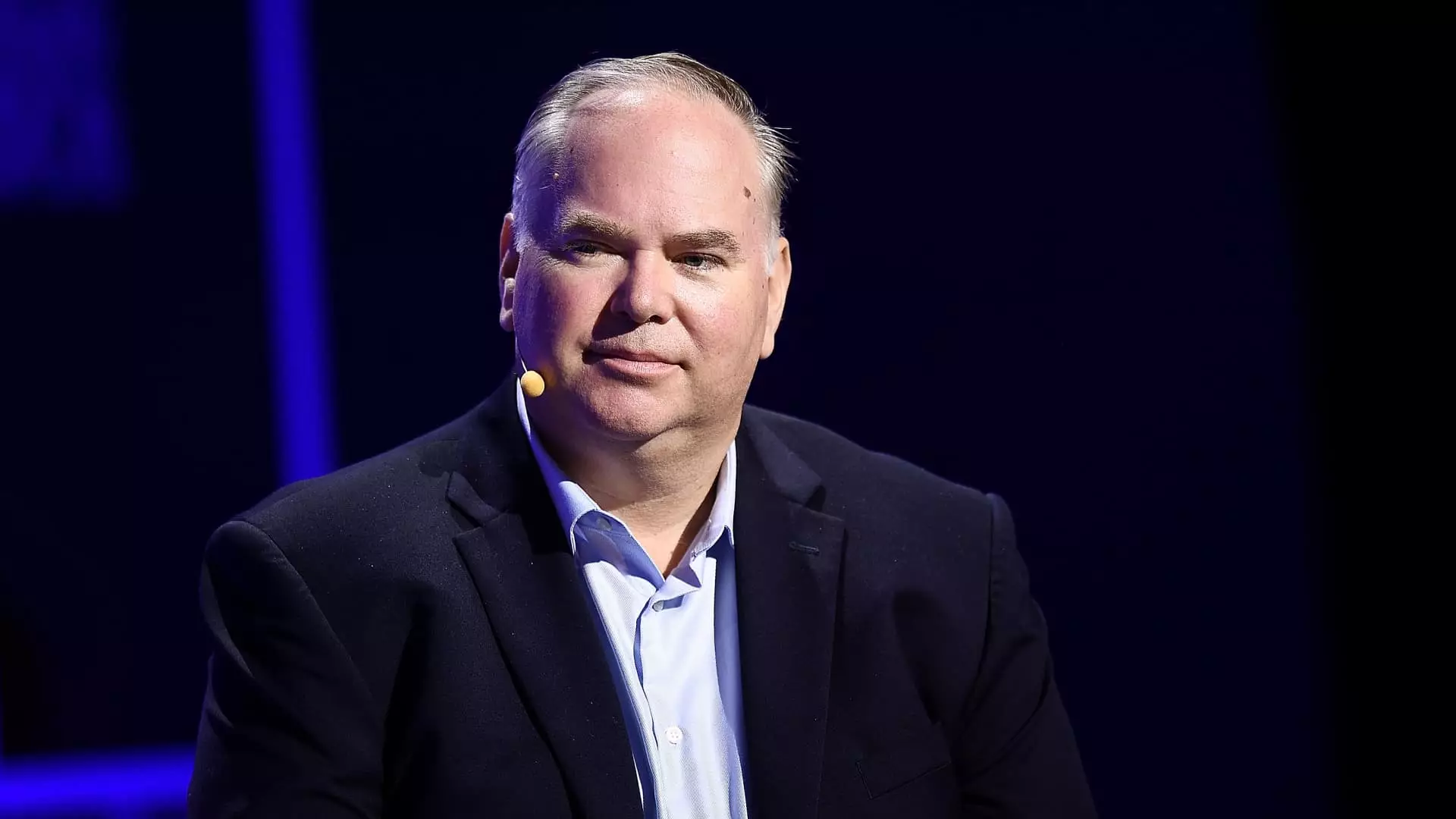In the fiercely competitive landscape of U.S. airlines, the tit-for-tat exchange between industry leaders reveals more than just corporate bravado; it underscores a fundamental debate about the future of the ultra-low-cost carrier (ULCC) model. Frontier Airlines CEO Barry Biffle’s candid rebuttal to United Airlines CEO Scott Kirby epitomizes a broader ideological clash: is the discount airline model resilient or doomed? While Kirby dismisses discount carriers like Spirit Airlines as heading toward obsolescence, Biffle counters with a robust defense rooted in operational efficiency and nuanced consumer needs. This rivalry illuminates a deeper truth — that in a saturated market, adaptability and understanding customer segmentation are paramount.
Biffle’s pointed remark, describing Kirby’s comment as “cute,” exemplifies a confident posture grounded in tangible cost metrics and market realities. His reference to U.S. domestic oversupply—a condition where more flights exist than demand justifies—challenged Kirby’s narrative of impending decline. Instead, Biffle suggests that this oversupply presents opportunity: airlines like Frontier are equipped to serve underserved niches, attract budget-conscious travelers, and capitalize on a market that larger carriers have overlooked or abandoned in pursuit of global dominance.
The Economics of Resilience: Why Discount Carriers Persist
One core element distinguishing Frontier’s approach from traditional legacy airlines lies in their cost structure. Biffle emphasizes lower unit costs—$7.50 per available seat mile (ASM), compared to United’s $12.36—highlighting a fundamental advantage in margins and flexibility. This cost efficiency allows ULCCs to innovate in service offerings, targeting consumers who prioritize affordability without sacrificing the entire travel experience. These customers might be recreational travelers, infrequent flyers, or those who prefer splurging on accommodations and entertainment rather than premium airline seats.
Moreover, Biffle implies that ULCCs serve a broader societal function: enabling travel for people who might otherwise remain on the margins, financially or otherwise. The ability to offer low fares ensures a democratisation of air travel, expanding the market rather than cannibalizing from larger, full-service airlines. It’s an optimistic view that the low-cost model isn’t a dying paradigm but a vital component of a diversified airline ecosystem.
While Kirby dismisses Spirit’s strategy and predicts its demise, Biffle’s analogy — likening the strategic use of spare capacity to a Nordstrom allowing Walmart customers to buy jeans — underscores the symbiotic potential of a healthy, competitive market rather than a zero-sum game. Instead of viewing themselves solely as competitors, airlines like Frontier could be seen as complementing larger carriers by filling gaps and invigorating the entire industry’s longevity.
Market Dynamics Requiring Innovation and Diversification
Despite the resilience touted by Biffle, the ULCC landscape faces significant hurdles. Rising operational costs post-pandemic, an oversupply of domestic flights, and aggressive strategies by larger airlines eroding fare premiums have squeezed profit margins. In response, carriers such as Spirit and Frontier are pivoting from pure price-based competition towards offering more value-added services, including bundled fares and premium options. This shift aims to attract a broader customer base that demands more than just the lowest price.
Kirby’s assertion that customers do not “get value” on ultra-low-cost carriers suggests a fundamental misunderstanding or oversight. It underscores a common misconception that lower prices equate to lesser value, ignoring the growing segment of travelers willing to pay for convenience, customization, and comfort. Discount airlines, therefore, have an opportunity to redefine their relevance by innovating within their price-sensitive models—integrating curated amenities or flexible packages that appeal to evolving traveler preferences.
In a broader context, this emerging competition signifies a potential renaissance for ULCCs. Rather than being sidelined, their agility and operational efficiency might allow them to adapt quickly to market changes, carving out sustainable niches where legacy carriers cannot operate as economically. The key lies in their ability to blend affordability with innovative service options that meet the needs of modern travelers who seek both value and comfort.
The Future of Low-Cost Aviation: From Discount to Diversified
Looking ahead, the ultra-low-cost airline model’s vitality depends on its capacity to evolve rather than revert to pure fare slashing. The era of basic economy cabins with extra fees is nearing a saturation point. The industry’s giants and budget carriers alike are recognizing that margins can be preserved—and even expanded—by offering tiered options, bundling services, and enhancing customer experience without abandoning the core tenets of affordability.
Biffle’s confidence and rhetoric suggest that ULCCs will retain their foothold as long as they adapt intelligently to market signals. Their advantage in operational efficiency grants them a potent weapon against larger airlines burdened by legacy infrastructure and higher cost bases. These airlines can serve as catalysts for a more dynamic, inclusive air travel market, opening doors for millions of new travelers and fostering healthy competition.
Ultimately, the contest between legacy and ultra-low-cost carriers is a reflection of a broader evolution in consumer preferences. The future landscape will likely be characterized by a diverse range of options, with discounters offering innovative value propositions that challenge traditional models and prove their resilience amid economic uncertainties. It’s not about the death of discount airlines but their transformation into more holistic travel providers capable of thriving in a complex, competitive environment.


Leave a Reply